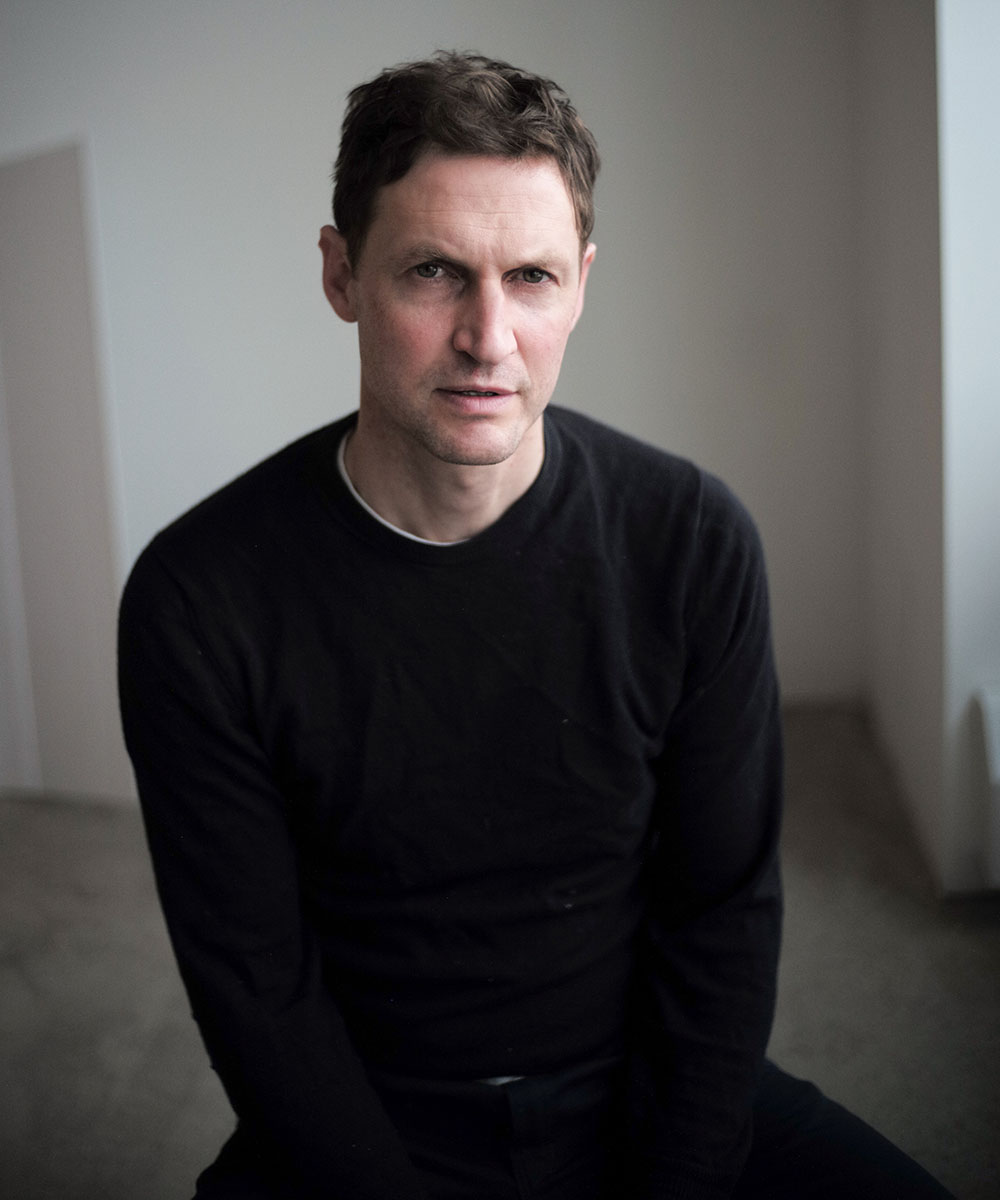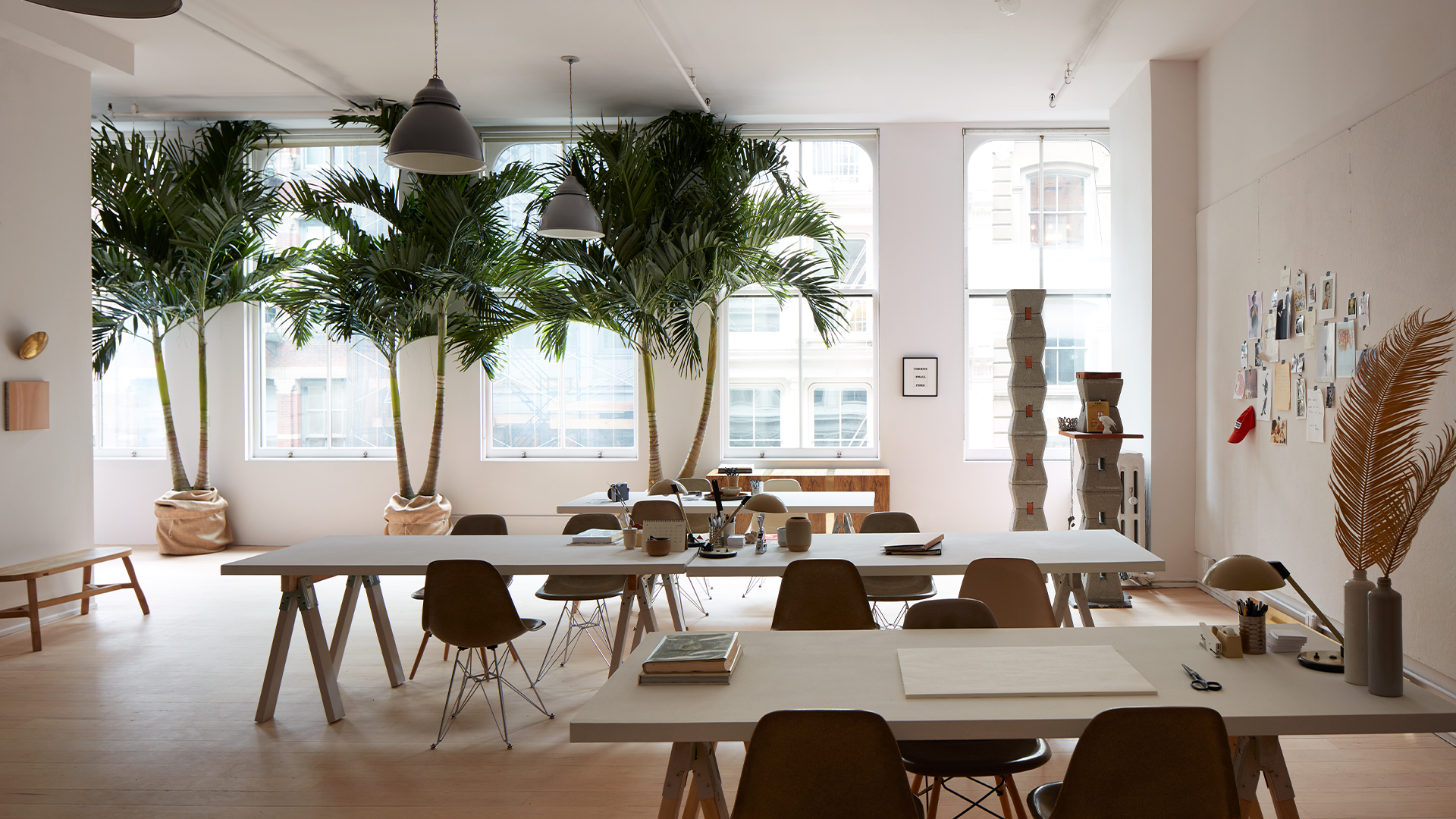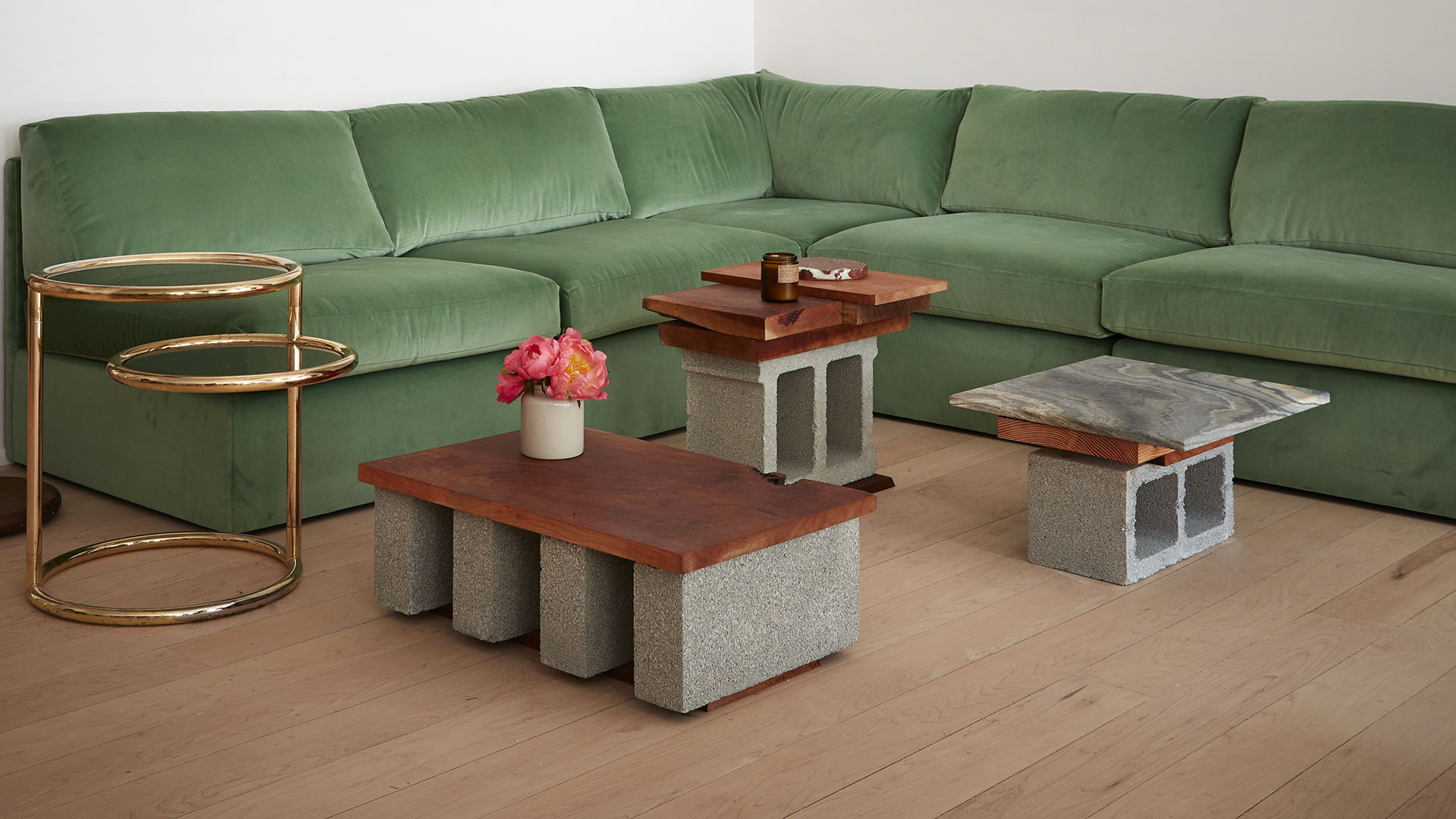Interview
Umberto Bellardi Ricci
Umberto Bellardi Ricci sees possibilities for form and function everywhere: Meandering through the Navy Yard, where he keeps a light-filled studio, scouring marble yards, examining the way rust eats through paint on a car; or when he’s out surfing, watching the water ripple along the sea. “It’s the most mundane moments that interest me most,” he says.
There’s nothing conventional about Ricci’s work — or the path that brought him here — but he delights in life’s unexpected twists and turns. The architect and sculptor grew up in Luxembourg and moved to London and Paris to study. He met his future wife, Tijana Masic, after moving to Mexico City for a design project. Masic, a Serbian fashion designer living in New York City, was in town for a long weekend, and a mutual friend set them up. The couple married a year later in an Italian marble yard in the Greenpoint neighborhood of Brooklyn. “It was the closest thing I could find to a little Italian church in New York City,” Ricci says.
We check in on the artist, who is taking a break from teaching architecture, to find out how he’s passing the time and what is keeping him inspired.
Portrait by Jovan Todorovic

On what drew him to architecture
I came from a family of diplomats and lawyers and think they always expected me to go down that route, but I managed to escape. My mom is German and my dad is Italian, and they live in Luxembourg — it’s such a strange, small place. I moved to London when I was 18 and studied social studies and anthropology. I got my Master’s in politics and human rights and was always interested in social science. I was fascinated by how a city works, from the center to the suburbs.
When I started studying architecture, my first project was about underwater sound. You could say I’ve always been interested in the way space and sound interact. In a way, the transition from sound (spatial and abstract) to architecture and sculpture was seamless. They both have an element of playfulness.
On teaching at the Architectural Association School of Architecture in London
Straight out of school, I was asked to teach at the AA School in London. All the greats have studied there — Rem Koolhaas, David Chipperfield, Florence Knoll and Zaha Hadid. I stayed there for a few years, and it allowed me to develop my own practice.

On the relationship between sculpture and design
Coming from Europe, my concept of space was very different. In Mexico, I came across a series of spaces that were designed to be contemplative rather than functional. I also discovered sculptures that were functioning at an architectural scale.
Take Luis Barragán, who was formally trained as an engineer but self-trained as an architect. He was best known for his use of color, light, shadow and texture and often said that he approached architecture and landscape as one thing. His collaborator, Mathias Goeritz, who wrote a manifesto on emotional architecture, was also a big influence.
On artists who inspire him
I have often been inspired by artists who created sculpture at an architectural scale. For example, Richard Serra, working in steel, or James Turrell and Dan Flavin, both of whom work with light. I hope to bring that quality of a very warm light refracted by metal into the home or down to a scale that works in a residential environment.
On the simplicity of materials
A big part of my work is taking mundane, everyday items and celebrating them, often by using them with precious materials. So pairing concrete with cherry wood, onyx or, often, marble slabs. The juxtaposition of these elevated materials when rested on something crude, like a cinder block, is interesting.
On his first time meeting Jenna
Jenna and I met through a mutual friend, Pablo Limón. She previously saw a series of sculptures I’d made with Rafael Prieto, the founder of Casa Boques and Savvy Studio. We made a series of five sculptural altars called Zoccolo V, designed to exhibit chocolate using cinder blocks and ready-mades. We both loved the idea of creating art out of materials readily available at a hardware store.
For Jenna’s new office, I brought a lot of materials to her space, and we just started playing around. We saw how they looked and felt in the space and just started putting things together. We ended up making a lectern for books, side tables, an 8-foot-tall Brancusi tower and a few low-slung accent tables using leftover materials.

On the first piece of art he designed
It was a wax sculpture I did as an architecture student. I shot black melted wax with a tree branch that had balloons attached to a large container of water, which led to an instant freeze of these organic forms with perfect spherical volumes in this monochromatic wax. I remember the professor’s perplexed reaction, telling other professors, “He doesn’t realize what he’s done.” It was quite funny but also made me realize the power form can have on people.
On his creative process
I moved into a studio on the 13th floor in the Navy Yard building in Brooklyn, and it’s been a real savior to have such a unique place to work from, especially during this time. My windows face the Manhattan skyline, and there’s this beautiful afternoon light that pours in later in the day.
When I am designing, I try not to overthink. I like having a brief prior, as I’m trained as an architect, but once I have this framework, I don’t think anymore. I just make models, sketch and play without consciously thinking.
Usually, my ideas start with a physical model, which can be anything like a rough model out of cardboard. If I need to communicate dimensions, I will draw it or do a 3-D rendering. When I’m working with folded steel, I’ll work on the contours and bring them in a 3-D sketch to speculate on thickness. There’s a steel fabricator I like in the Bronx. He’ll let me use tools in a way that they’re not designed for, but that’s where things get interesting. I always think about Giorgio de Chirico, who said, “You don’t need to invent anything new; you just see it differently.”